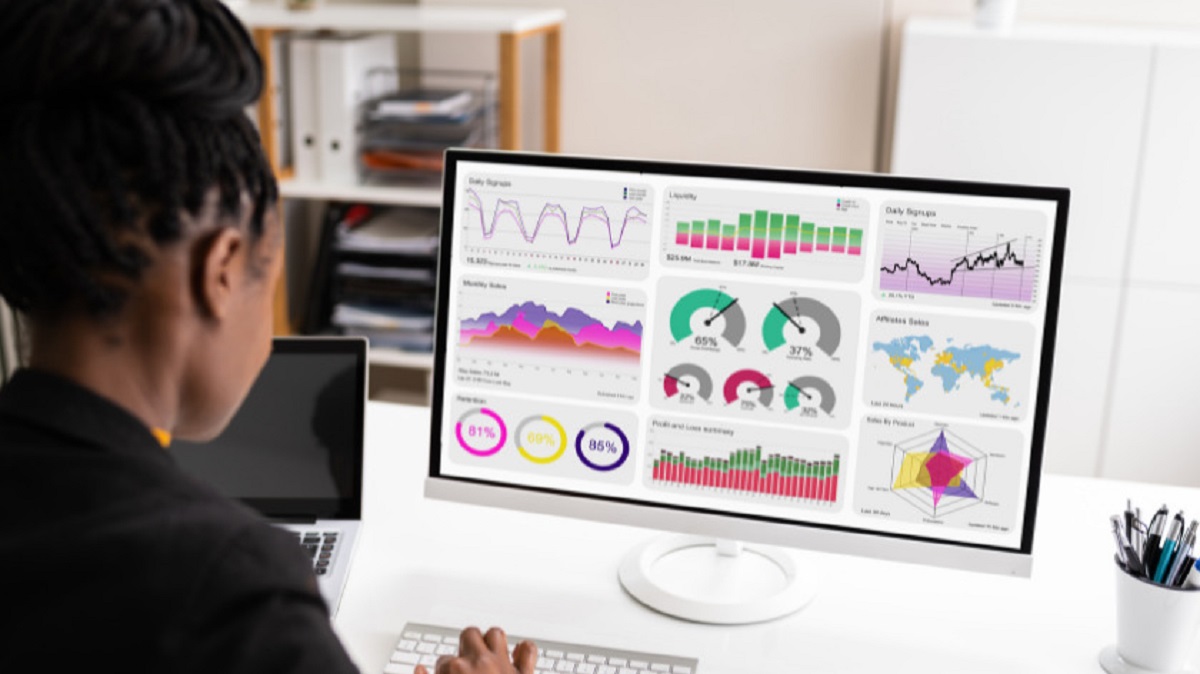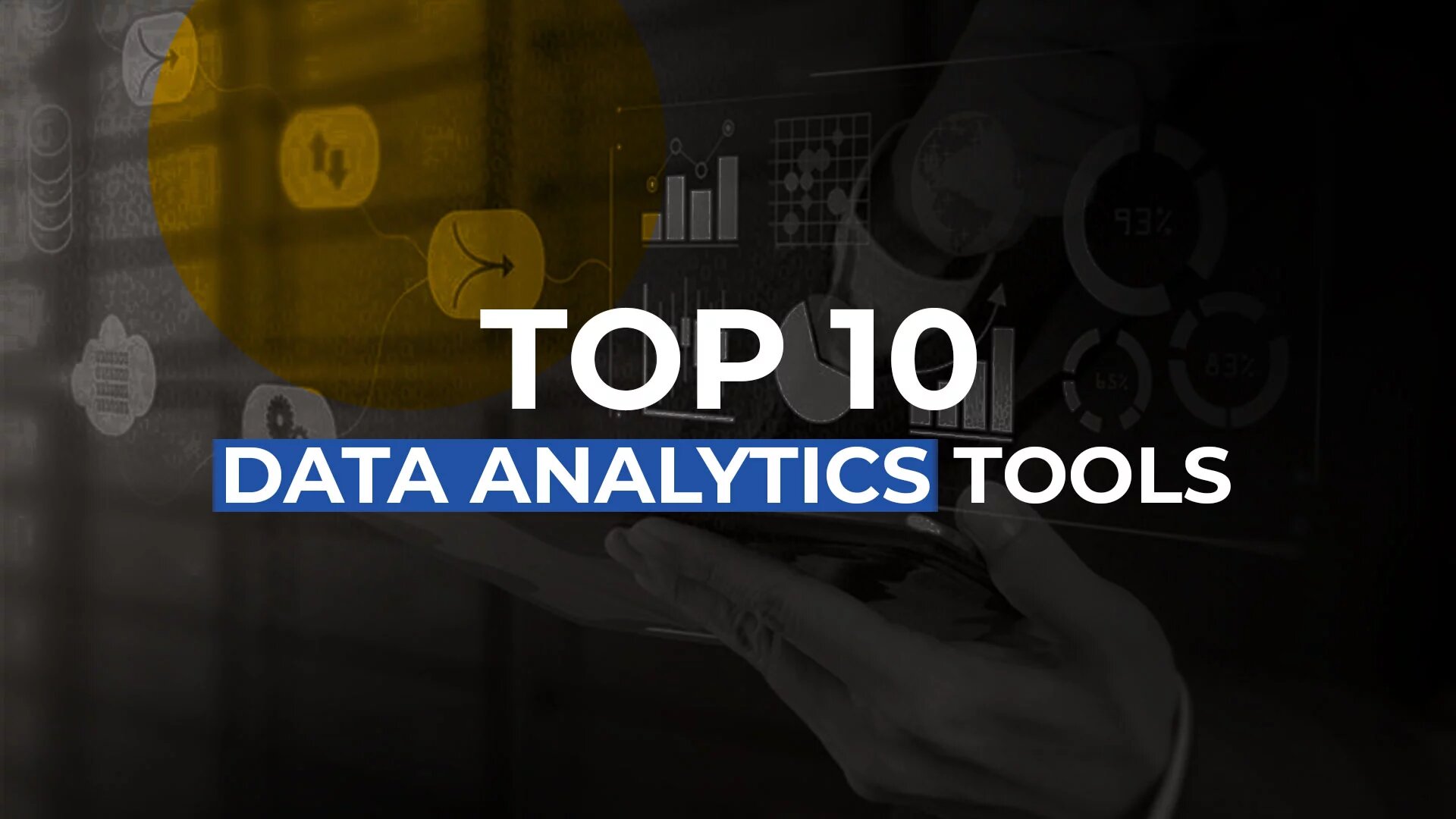Introduction
Welcome to the world of big data analytics, where businesses explore vast amounts of data to gain valuable insights and drive informed decision-making. In today’s data-driven landscape, organizations of all sizes face various challenges that impact their overall performance and success. By harnessing the power of big data analytics, businesses can address these common problems and unlock new opportunities for growth and innovation.
Big data analytics is the process of extracting, analyzing, and interpreting large and complex datasets to uncover patterns, trends, and correlations that can guide strategic decision-making. This powerful tool allows businesses to gain a deeper understanding of their operations, customers, and market dynamics, enabling them to optimize processes, enhance customer experiences, and achieve a competitive advantage.
In this article, we will explore some of the most common business problems that can be effectively addressed through big data analytics. From lack of data insights to inefficient data processing, inaccurate decision-making to poor customer understanding, we will delve into the challenges businesses face and the ways big data analytics can offer insights and solutions.
By the end of this article, you will have a clear understanding of how big data analytics can address these common business problems and empower organizations to achieve their goals and stay ahead in today’s fast-paced and data-driven business landscape.
Lack of Data Insights
One of the primary challenges faced by businesses is the lack of meaningful insights from their data. Many organizations collect vast amounts of data but struggle to extract valuable information from it. This can hinder decision-making processes and prevent businesses from leveraging their data effectively.
Big data analytics provides a solution to this problem by enabling businesses to uncover hidden patterns and trends within their data. With advanced analytics techniques such as machine learning and data mining, organizations can gain deeper insights into their operations, customers, and market dynamics.
By analyzing historical and real-time data, businesses can identify key factors that impact their performance, such as customer preferences, market trends, and operational inefficiencies. These insights can then be used to optimize processes, improve products and services, and make data-driven decisions.
For example, a retail company can use big data analytics to analyze customer purchasing behavior and preferences. By understanding what products customers are buying, when they are buying them, and the factors that influence their purchasing decisions, the company can tailor marketing campaigns, optimize inventory management, and enhance the overall customer experience.
In addition to internal data, big data analytics also enables businesses to leverage external data sources such as social media, online reviews, and industry reports. By incorporating these external insights into their analysis, organizations can gain a holistic view of their business and make more informed decisions.
Overall, big data analytics helps businesses overcome the challenge of lack of data insights by providing the tools and techniques to extract meaningful information from their data. With these insights, organizations can drive innovation, gain a competitive edge, and stay ahead in today’s data-driven business landscape.
Inefficient Data Processing
Inefficient data processing is a common problem faced by businesses when dealing with large volumes of data. Traditional data processing methods can be time-consuming, resource-intensive, and prone to errors. This hinders organizations from gaining timely insights and acting upon them quickly.
Big data analytics offers solutions to overcome this challenge by providing technologies and techniques that enable faster and more efficient data processing. With tools like distributed computing frameworks, such as Hadoop and Apache Spark, businesses can process large datasets in parallel across multiple machines, significantly speeding up the analysis process.
Additionally, big data analytics leverages data compression and data storage techniques to optimize the utilization of storage resources. By efficiently storing and compressing data, businesses can maximize the use of available storage space and reduce processing time.
Furthermore, big data analytics enables real-time and near real-time data processing, allowing organizations to gain insights and make decisions in a timely manner. With streaming data processing technologies like Apache Kafka and Apache Flink, businesses can analyze and respond to data as it’s generated, enabling them to take immediate actions and capitalize on opportunities.
For example, in the e-commerce industry, real-time data processing can help businesses monitor website traffic, track user behavior, and personalize user experiences in real-time. By analyzing data as it flows, organizations can instantly identify issues, optimize website performance, and provide personalized recommendations to users, enhancing their overall shopping experience.
Inefficient data processing not only slows down decision-making but also hinders organizations from capitalizing on time-sensitive opportunities. With big data analytics, businesses can overcome this challenge and process data efficiently, enabling them to gain insights faster, make informed decisions, and seize opportunities as they arise.
Inaccurate Decision-making
Inaccurate decision-making is a critical challenge faced by businesses when they lack the necessary information and insights to make informed choices. Relying on intuition or incomplete data can lead to poor decisions that adversely affect business performance and growth.
Big data analytics plays a vital role in addressing this challenge by providing organizations with accurate and reliable insights. By analyzing large and diverse datasets, businesses can gain a comprehensive understanding of their operations, customers, and market dynamics, enabling them to make data-driven decisions.
With advanced analytics techniques, such as predictive modeling and data visualization, organizations can anticipate future trends, identify potential risks, and evaluate various scenarios to make informed choices. These techniques allow businesses to assess the potential outcome of different decisions and choose the most optimal path.
For example, a manufacturing company can use big data analytics to analyze production data, quality control information, and customer feedback. By identifying patterns and correlations in this data, the company can make accurate decisions regarding production processes, quality improvements, and customer satisfaction initiatives.
Furthermore, big data analytics empowers businesses to continuously monitor and evaluate the impact of their decisions. With real-time data analytics and reporting, organizations can track the performance of their initiatives, measure key metrics, and make adjustments as needed. This iterative approach to decision-making ensures that businesses can adapt quickly to changing market conditions and optimize their strategies effectively.
By leveraging big data analytics, businesses can overcome the challenge of inaccurate decision-making. Armed with accurate insights and predictive capabilities, organizations can make informed choices that drive growth, enhance operational efficiency, and deliver better outcomes for their stakeholders.
Poor Customer Understanding
Poor customer understanding is a significant problem faced by businesses when they lack the insights needed to truly understand their target audience. Without a clear understanding of customers’ preferences, behaviors, and needs, businesses struggle to deliver personalized experiences and cater to their customers effectively.
Big data analytics provides a solution to this challenge by enabling businesses to gain a deep understanding of their customers through data analysis. By collecting and analyzing customer data from various sources such as transaction records, social media interactions, and website activity, organizations can uncover valuable insights about their customers’ preferences, behaviors, and buying patterns.
With big data analytics, businesses can segment their customer base and create detailed customer profiles. These profiles help identify key customer segments based on demographics, interests, and purchase history. By understanding the unique needs and preferences of different customer segments, organizations can tailor their marketing strategies, products, and services to effectively meet those needs and increase customer satisfaction.
Moreover, big data analytics enables businesses to track customer sentiment and gather feedback in real-time. Sentiment analysis techniques can analyze customer reviews, social media mentions, and customer service interactions to gauge customer satisfaction levels and identify areas for improvement. This real-time feedback loop allows organizations to proactively address customer concerns and enhance the overall customer experience.
For instance, an e-commerce company can utilize big data analytics to track customer browsing behavior, analyze purchase history, and leverage personalized recommendations. By understanding each customer’s preferences and purchase patterns, the company can deliver targeted product recommendations and tailor marketing campaigns to individual customers, resulting in higher customer engagement and increased sales.
In summary, big data analytics helps businesses overcome the challenge of poor customer understanding by providing the means to collect, analyze, and utilize customer data effectively. By gaining deep insights into their customers, organizations can deliver personalized experiences, improve customer satisfaction, and foster long-lasting relationships.
Ineffective Marketing Strategies
Ineffective marketing strategies can significantly hinder a business’s ability to reach its target audience and drive desired outcomes. Without a clear understanding of customer preferences and market dynamics, businesses may struggle to create impactful marketing campaigns that resonate with their target audience.
Big data analytics offers a solution to this challenge by providing valuable insights that can help businesses refine and optimize their marketing strategies. By analyzing vast amounts of customer data, businesses can uncover key trends, preferences, and behaviors that can inform their marketing decisions.
One way big data analytics improves marketing strategies is through enhanced customer segmentation. By grouping customers based on various characteristics such as demographics, psychographics, and purchase history, businesses can personalize their marketing messages and deliver targeted campaigns to specific customer segments. This targeted approach increases the relevance and effectiveness of marketing efforts, leading to higher conversion rates and better ROI.
In addition to segmentation, big data analytics also enables businesses to track and analyze customer engagement metrics. By monitoring key indicators such as click-through rates, conversion rates, and customer lifetime value, organizations can identify which marketing channels and campaigns are performing well and which ones need improvement. This data-driven approach allows businesses to allocate their marketing budgets effectively and optimize their strategies for maximum impact.
Furthermore, big data analytics helps businesses understand the customer journey and identify touchpoints where marketing efforts can have the most influence. By analyzing data from multiple channels, such as social media, email marketing, and website interactions, organizations can map out the customer journey and identify key moments where personalized messages or offers can be delivered. This targeted approach increases the effectiveness of marketing strategies and enhances customer satisfaction.
For example, a retail company can leverage big data analytics to analyze customer purchase history, browsing behavior, and social media interactions. By understanding which products a customer is interested in and their preferred communication channels, the company can create personalized marketing campaigns that drive engagement and conversion.
In summary, big data analytics empowers businesses to create more effective marketing strategies by providing valuable insights into customer preferences, segmentation, and engagement metrics. By leveraging these insights, organizations can optimize their marketing efforts, increase customer engagement, and achieve better results.
Inadequate Inventory Management
Inadequate inventory management is a common challenge that can negatively impact a business’s operations and profitability. When businesses do not have an accurate understanding of their inventory levels, they may face issues such as stockouts, overstocking, and inefficient replenishment processes.
Big data analytics provides a solution to this problem by enabling businesses to gain better visibility and control over their inventory. By analyzing historical sales data, customer demand patterns, and supply chain data, organizations can optimize their inventory management processes and ensure sufficient stock levels while minimizing the risk of excess inventory.
One way big data analytics improves inventory management is through demand forecasting. By analyzing past sales data, market trends, and external factors such as seasonality and promotions, businesses can predict future demand more accurately. This enables them to adjust their inventory levels accordingly and ensure they have the right products in stock when customers demand them.
In addition to demand forecasting, big data analytics enables real-time inventory tracking and monitoring. By integrating various data sources such as point-of-sale systems, supply chain data, and customer orders, businesses can have a real-time view of their inventory levels. This allows them to identify inventory gaps or excesses quickly and take immediate action to optimize their inventory levels.
Furthermore, big data analytics helps identify patterns and correlations between different products and customer segments. By analyzing purchasing behaviors and customer preferences, businesses can identify cross-selling opportunities and plan their inventory accordingly. This ensures that popular or related products are readily available to customers, increasing sales and customer satisfaction.
For example, an electronics retailer can use big data analytics to analyze sales data and customer preferences. By identifying the popular products, customer preferences, and purchase patterns, the retailer can optimize their inventory levels, focus on high-demand items, and tailor marketing campaigns to target specific customer segments.
In summary, big data analytics plays a crucial role in addressing the challenge of inadequate inventory management. By leveraging historical data, demand forecasting, and real-time monitoring, organizations can optimize their inventory levels, reduce costs, and ensure customer satisfaction through timely product availability.
Slow Response to Market Changes
Businesses that struggle to respond quickly to market changes often face challenges in remaining competitive and seizing opportunities. Without the ability to adapt swiftly, organizations may miss out on emerging trends, lose market share, and fall behind their competitors. Big data analytics offers solutions to address this challenge by providing businesses with real-time insights and the ability to quickly analyze and make sense of market data.
One way big data analytics helps businesses respond faster to market changes is through real-time data monitoring. By leveraging advanced data collection and analysis tools, organizations can monitor key market indicators, customer behaviors, and competitor activities. This real-time monitoring enables businesses to detect shifts in market demand, emerging trends, or changes in customer preferences, allowing them to adapt their strategies and offerings accordingly.
Additionally, big data analytics facilitates predictive analysis, enabling businesses to anticipate market changes and proactively prepare for them. By analyzing historical data, market trends, and external factors, organizations can make predictions about future market conditions. This foresight allows businesses to implement proactive strategies, such as adjusting production levels, launching new products, or targeting new customer segments, to capitalize on upcoming opportunities.
Furthermore, big data analytics enables businesses to conduct sentiment analysis and track customer feedback. By monitoring social media platforms, online reviews, and customer support interactions, organizations can gain insights into customer sentiment and opinions in real-time. This feedback loop allows businesses to identify emerging customer needs, address potential issues promptly, and tailor their offerings and marketing messages to resonate with their target audience.
For example, a food delivery service can leverage big data analytics to analyze real-time customer feedback and delivery data. By monitoring customer reviews, social media conversations, and delivery time data, the service can quickly identify any issues or changes in customer expectations. This allows them to take immediate action, such as optimizing delivery routes or enhancing customer service, to maintain a competitive edge in the market.
In summary, big data analytics empowers businesses to respond faster to market changes by providing real-time insights, predictive analysis, and customer feedback monitoring. By leveraging these capabilities, organizations can adapt their strategies and offerings promptly, seize opportunities, and stay ahead of their competitors in the dynamic and fast-paced business landscape.
Compliance and Risk Management
Compliance and risk management are crucial aspects for businesses operating in highly regulated industries. Failure to comply with regulations and effectively manage risks can lead to legal issues, financial losses, and damage to the organization’s reputation. Big data analytics plays a significant role in addressing these challenges by providing businesses with tools and insights to ensure compliance and effectively manage risks.
One way big data analytics helps in compliance and risk management is through data monitoring and analysis. By collecting and analyzing large amounts of data, businesses can identify potential risks, suspicious activities, and anomalies that may indicate non-compliance or fraudulent behavior. By leveraging advanced analytics techniques, such as anomaly detection and pattern recognition, organizations can detect and mitigate risks in real-time.
Big data analytics also enables businesses to conduct regulatory compliance assessments. By analyzing vast amounts of data related to regulations and requirements, organizations can ensure that their operations and practices are aligned with applicable laws and regulations. This proactive approach helps businesses identify potential compliance gaps, implement necessary controls, and minimize the risk of non-compliance.
Another way big data analytics aids in compliance and risk management is through predictive analytics. By analyzing historical data and market conditions, organizations can predict potential risks and compliance violations before they occur. This allows businesses to take preventive measures, such as implementing additional controls or revising processes, to mitigate risks and ensure compliance proactively.
Furthermore, big data analytics enhances the effectiveness of risk assessment and auditing processes. By automating data collection, integration, and analysis, organizations can streamline the risk assessment and auditing processes. This results in improved accuracy, efficiency, and the ability to have real-time visibility into potential risks and compliance gaps.
For example, in the financial industry, big data analytics enables organizations to detect and prevent fraudulent activities by analyzing transaction data, customer behavior patterns, and historical fraud cases. By proactively identifying suspicious activities, organizations can mitigate risks, safeguard customer assets, and maintain regulatory compliance.
In summary, big data analytics is a crucial tool for businesses to ensure compliance and effectively manage risks. By leveraging data monitoring, analysis, and predictive capabilities, organizations can detect potential compliance issues, mitigate risks, and stay ahead of regulatory requirements in today’s complex and ever-changing business landscape.
Conclusion
In today’s data-driven business landscape, organizations face numerous challenges that can impede their growth and success. However, big data analytics offers powerful solutions to these challenges, enabling businesses to address common problems and unlock new opportunities.
By harnessing the power of big data analytics, businesses can overcome the lack of data insights by extracting valuable information from their data and gaining deeper insights into their operations, customers, and market dynamics. Additionally, inefficient data processing can be tackled through the use of distributed computing frameworks and real-time data processing techniques, enabling faster and more efficient analysis.
Inaccurate decision-making can be mitigated by leveraging big data analytics to make data-driven decisions, relying on accurate insights and predictive models. With a clear understanding of customer preferences and behaviors, businesses can tailor their marketing strategies and deliver personalized experiences, addressing the problem of poor customer understanding.
Inadequate inventory management can be improved through demand forecasting, real-time monitoring, and effective tracking of customer behaviors. Additionally, big data analytics facilitates faster response to market changes by providing real-time insights, predictive analysis, and customer feedback analysis.
Lastly, big data analytics plays a crucial role in compliance and risk management by monitoring data, identifying potential risks, ensuring regulatory compliance, and enhancing risk assessment and auditing processes.
In conclusion, big data analytics has become an indispensable tool for businesses to address common challenges and drive success. By leveraging the power of data, organizations can gain valuable insights, optimize processes, make informed decisions, and stay ahead in today’s fast-paced, data-driven world.

























